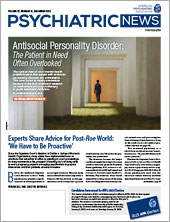A recent survey of high schoolers in Southern California has found that nontherapeutic oral nicotine products such as tablets or gummies are popular among adolescents, ranking only second in use to e-cigarettes. The survey findings were published in Pediatrics.
“Nontherapeutic nicotine gums, lozenges, tablets, and gummies have a number of features that could potentially attract youth,” said Alyssa F. Harlow, Ph.D., a postdoctoral scholar at the Keck School of Medicine at the University of Southern California (USC) who led the survey. “These products resemble candy and are highly discreet, making them easy to hide.” The act of popping a piece of gum or candy in the mouth might also feel less risky to an adolescent than inhaling nicotine, the researchers noted in the Pediatrics paper.
The decision to add questions about nicotine products to an ongoing behavioral health survey of adolescents across seven school districts in Southern California arose after the researchers noticed increased marketing of these products on social media and other platforms. The survey included questions about nicotine pouches (which are placed in between the lip and gums like snus, but are filled with cellulose, nicotine salt, and flavorings rather than shredded tobacco), as well as nicotine gums, lozenges, tablets, and gummies.
The youth were also asked about their use of combustible cigarettes, e-cigarettes, snus, cigars, little cigars or cigarillos, and hookahs or waterpipes.
The researchers analyzed the responses of 3,516 9th and 10th graders who completed the survey between September 30 and December 14, 2021.
Overall, e-cigarette use was the most prevalent among the respondents, with 9.6% of students reporting ever vaping and 5.5% vaping in the past six months. The use of oral nicotine products (not including nicotine pouches) was second most prevalent among the youth, with 3.1% of students reporting ever use and 1.4% reporting past six-month use.
The reported use of all other products (including nicotine pouches) was lower than 1%. In the paper, Harlow and colleagues suggested pouches might seem less appealing to use or possibly more difficult to access than other nicotine or tobacco products. But as pouches are also heavily marketed and come in fruit flavors, continued monitoring of these products is also warranted, they wrote.
“Since there have been no prior estimates of the use of these oral products, we had no exact idea of what to expect,” Harlow said. Still, she said her team was a little surprised to see that adolescents were using oral nicotine products more than other tobacco-based products.
The researchers also found that the use of any oral nicotine product (including nicotine pouches) was more likely among Hispanic teens; females; and teens identifying as transgender, nonbinary, or a sexual minority.
Shortly after the publication of the study, the Food and Drug Administration (FDA) issued its first warning letter to a company for illegally marketing flavored nicotine gummies without FDA authorization. In a statement, FDA Commissioner Robert M. Califf, M.D., acknowledged that these oral products “are a public health crisis just waiting to happen to our nation’s youth.” The company has since discontinued its line of flavored nicotine gummies.
Harlow hopes her group’s findings serve as a call to action for groups involved in health surveillance. “National surveys documenting trends in the use of these oral products are a must,” she said. Such data could help researchers to better understand when youth start using these products, which groups are most vulnerable, and if use of oral products leads to other illicit substance use.
Harlow and colleagues noted that in their analysis, over 77% of the adolescents who reported using oral nicotine products also reported a history of using other nicotine products, but the survey did not identify which products were initiated first.
Richard Miech, Ph.D., M.P.H., a research professor at the University of Michigan Institute for Social Research, told Psychiatric News that beginning in 2023 many more high school students will be asked about use of nicotine products as part of the Monitoring the Future survey. Miech is the principal investigator for this national survey, which is funded by the National Institute on Drug Abuse.
Miech thinks the use of these products has the potential to skyrocket, so his team is planning on watching the usage trends closely.
This study was supported by awards from the National Cancer Institute; National Institute on Drug Abuse; National Heart, Lung and Blood Institute; and Food and Drug Administration Center for Tobacco Products. ■

